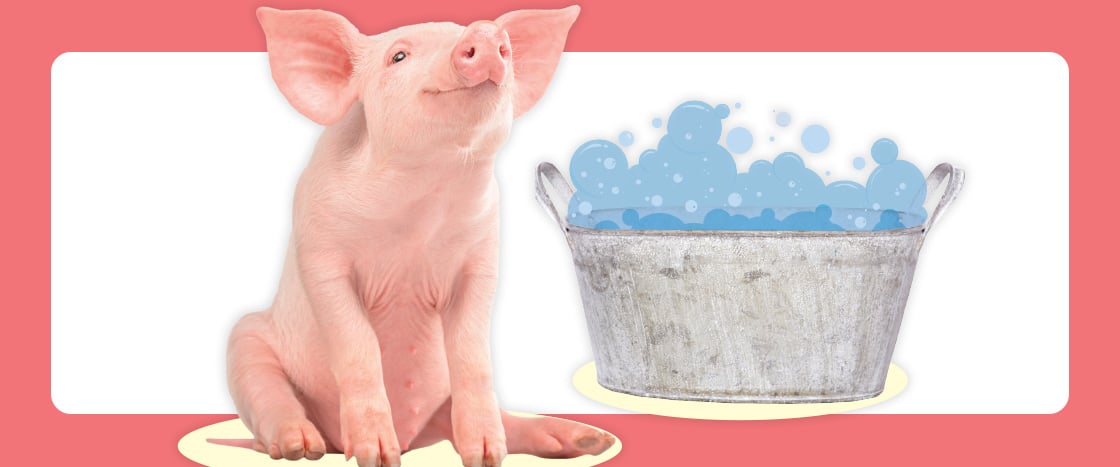©MILLAFEDOTOVA | DREAMSTIME.COM
Get in, pig.
Get in the tub.

Read a decodable silly story filled with mixed short-vowel words.
©MILLAFEDOTOVA | DREAMSTIME.COM
Get in, pig.
Get in the tub.
SHUTTERSTOCK.COM
I will not get in the tub.
I will not sit in it.
SHUTTERSTOCK.COM
It will be fun.
Hop on in.
SHUTTERSTOCK.COM
It is not fun.
I will not fit.
SHUTTERSTOCK.COM
You are not big.
You will fit in the tub.
ISTOCKPHOTO/GETTY IMAGES
I will get wet
That is what I will get.
ISTOCKPHOTO/GETTY IMAGES
Do not go yet.
Dip in a bit.
ISTOCKPHOTO/GETTY IMAGES; SHUTTERSTOCK.COM
No dip. No tub.
No rub-a-dub-dub!
SHUTTERSTOCK.COM
But will you get in if I fill it with mud?
More About the Article
Phonics (mixed short-vowel cvc words) Fluency
Word Family -cvc words
mud, tub, fun, but, get, yet, wet, pig, sit, fit, big, dip, bit not, hop
the, be, is, you, are, what, do, go, no
rub-a-dub-dub
Small Group
Pairs, Independent Reading
1. BEFORE READING
Preview letter sounds and high-frequency words (15 minutes)
Set a Purpose for Reading (3-5 minutes)
Reading Focus: Phonological Awareness (10 minutes)